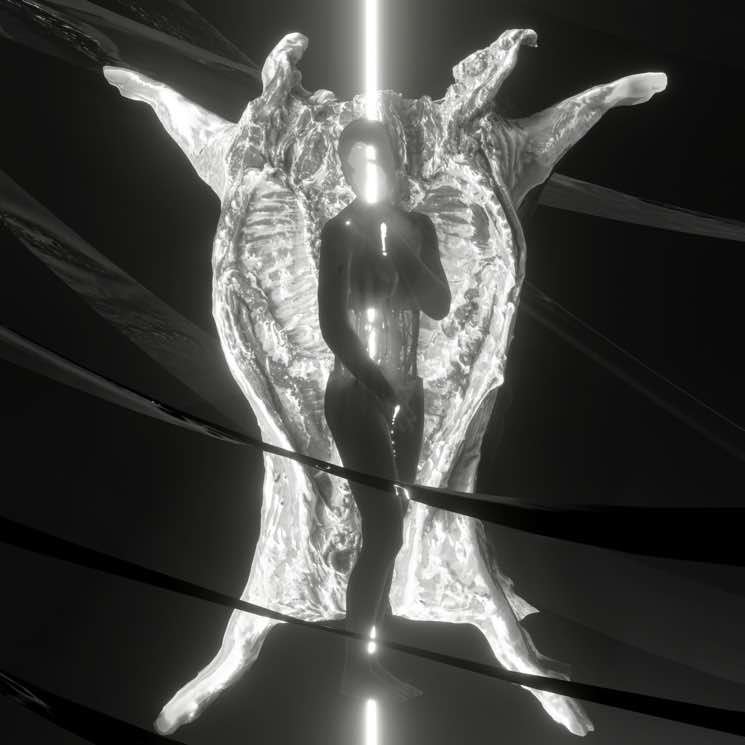There is palpable tension throughout this 20-movement cycle that makes a passive, or even casual listen virtually impossible. Stabat Mater is among the most challenging releases you have heard this year. And it's magnificent.
Ariadne features Christine Papania and Benjamin Forest, who describe themselves as an audio-visual "experimental sacred music duo" intent on "interspersing the ritualism of ancient spirituality and the secular iconography of the postmodern." This work is based primarily on visions reported by Hildegard von Bingen and Teresa of Ávila, two women who are said to be Christian mystics.
Stabat Mater's lyrics — sung exquisitely by Papania — are adapted from the two women's writings and from Aase Berg, a surrealist poet.
If this all sounds a bit inaccessible, that's not far from the truth. Besides its arcane subject matter, the individual pieces are full of stops, starts and changes of pace. The fact that there are 20 pieces contributes to that lack of flow; this is the least groovy album released in recent memory.
Despite all that, the end result is dazzling. In addition to Papania's crystal-clear vocal performance, the electronics are remarkably imaginative. The compositions are varied and the recordings have real depth. On "Fount of Love," for example, Forest moves from a gentle, twinkling intro to a gamelan-like drone, and then into a storm of harsh, stabbing electronics.
It all makes for an intensely gripping listen, but that's just the half of it. Ariadne has produced a web-based three-dimensional interactive experience whose visuals are as extreme as the recording. Just one of the 20 pieces was up at the time of this writing ("Grief Divine"), but the site promises a unique experience each time you visit, thanks to "real-time audio analysis, physics simulation and user input."
It comes with a warning about flashing lights and strobes that is entirely appropriate.
(Auris Apothecary)Ariadne features Christine Papania and Benjamin Forest, who describe themselves as an audio-visual "experimental sacred music duo" intent on "interspersing the ritualism of ancient spirituality and the secular iconography of the postmodern." This work is based primarily on visions reported by Hildegard von Bingen and Teresa of Ávila, two women who are said to be Christian mystics.
Stabat Mater's lyrics — sung exquisitely by Papania — are adapted from the two women's writings and from Aase Berg, a surrealist poet.
If this all sounds a bit inaccessible, that's not far from the truth. Besides its arcane subject matter, the individual pieces are full of stops, starts and changes of pace. The fact that there are 20 pieces contributes to that lack of flow; this is the least groovy album released in recent memory.
Despite all that, the end result is dazzling. In addition to Papania's crystal-clear vocal performance, the electronics are remarkably imaginative. The compositions are varied and the recordings have real depth. On "Fount of Love," for example, Forest moves from a gentle, twinkling intro to a gamelan-like drone, and then into a storm of harsh, stabbing electronics.
It all makes for an intensely gripping listen, but that's just the half of it. Ariadne has produced a web-based three-dimensional interactive experience whose visuals are as extreme as the recording. Just one of the 20 pieces was up at the time of this writing ("Grief Divine"), but the site promises a unique experience each time you visit, thanks to "real-time audio analysis, physics simulation and user input."
It comes with a warning about flashing lights and strobes that is entirely appropriate.
